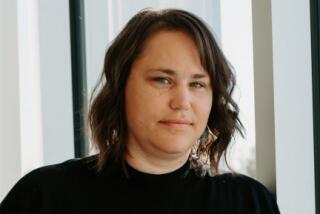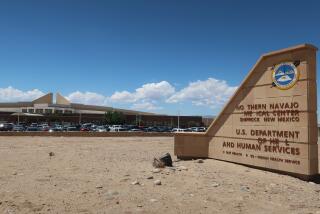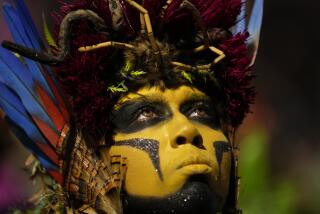THE NEW TRIBALISM: Defending Human Rights in an Age of Ethnic Conflict : Indigenous People : Nations’ Oldest Inhabitants Called Poorest, Most Abused : New report says natives are being forced off their lands by development and pollution.
- Share via
Scattered across six continents, they bear names like Sami and Choco, Mixtec and San, Inuit and Yanomami. Altogether, they total at least 300 million people.
But of all the world’s diverse ethnic groups, the least known are among its oldest dwellers, the roughly 5,000 groups of indigenous and tribal people. They’re also among those whose human rights are most abused, according to a new report by the International Labor Organization.
Indigenous people are consistently the world’s poorest in both industrialized and developing countries, the ILO study found. They are increasingly being forced off the land they have worked for centuries, even millennia. And as their physical and cultural environment is destroyed, some are even now threatened with extinction.
“Indigenous and tribal peoples are always, always at the bottom of the social and economic heap,” said Michel Hansenne, ILO director general.
The study, prepared for next week’s U.N. Human Rights Conference in Vienna, reports that indigenous people have the world’s highest rates of infant mortality, the highest rates of unemployment, the highest rates of alcoholism, the highest rates of diseases and ill health and the highest rates of prison occupancy.
“Indigenous people, generally, are outside the system. They tend to live by their own customs, their own rules, which are different from Western civilization. In too many countries today they are considered as obstacles to development and to national unity. But these peoples have the right to live their own lives if they so choose,” Hansenne added.
Most of the rights abuses have to do with the land, on which indigenous and tribal peoples have lived for centuries but do not hold property titles or deeds--features of systems introduced by outsiders.
Most indigenous groups also reside in rural or fragile ecological areas where the land as well as the people are threatened by the encroachment of modernization. In Brazil, where the Indian population has dwindled to 200,000, the Yanomami are under pressure from a gold rush over the past three years that has brought with it disease--including venereal disease and AIDS--environmental destruction, slavery, prostitution and other previously unknown problems, the report said.
“We have a lot to learn from them in terms of ecologically sound management of fragile and harsh environments, equitable systems of resource distribution and quality of life,” said Manuela Tomei, an ILO specialist. The Philippines’ Huannunao have identified 400 more forest animal and plant species than have modern scientists.
Asia boasts the largest indigenous population with 200 million, including the Siberian regions of Russia. Latin America and the Caribbean are home to 30 million, North America about 16 million.
Among the worst off are indigenous groups in Bolivia and Guatemala, where they are a majority and yet fare more poorly than the minority. Indigenous children receive less than one-third the schooling of the rest of the Guatemalan population, the ILO study found.
India’s 63 million indigenous people also have fared badly. Over a million are expected to be displaced by a dam project, on top of 8 million already displaced.
The study also faults the United States, which has not signed an international convention allowing ILO monitoring of the treatment of indigenous people.
Indigenous people fare best in Scandinavian countries, the report found. Norway, for example, has recently established a Sami parliament to administer local affairs of its indigenous people, often referred to incorrectly as Lapps. They have also been granted the right to herd reindeer on land they do not own in the far north.
And Canada recently granted the Inuit, often known as Eskimos, rights of self-administration in a large area of northeastern Canada called Nunavut.
More to Read
Sign up for Essential California
The most important California stories and recommendations in your inbox every morning.
You may occasionally receive promotional content from the Los Angeles Times.










